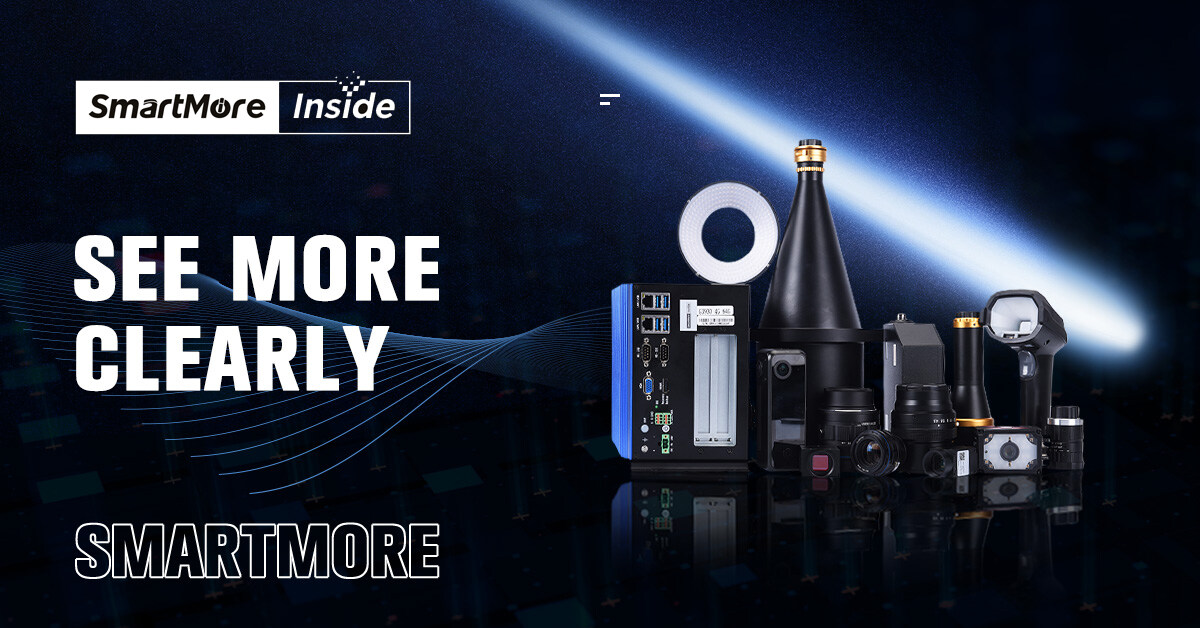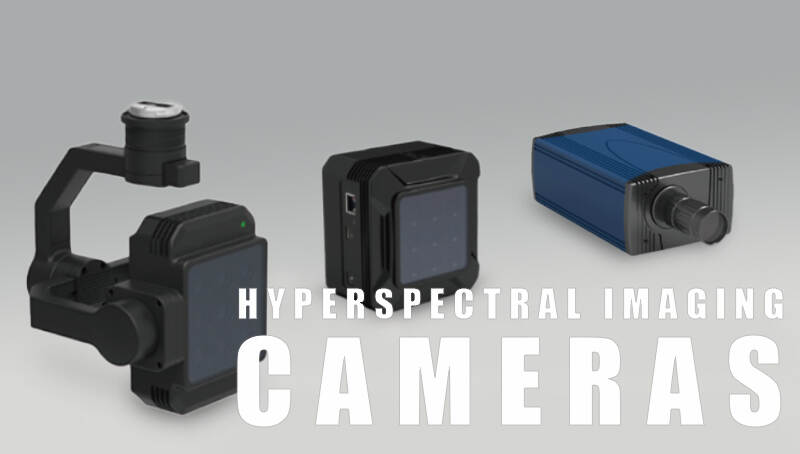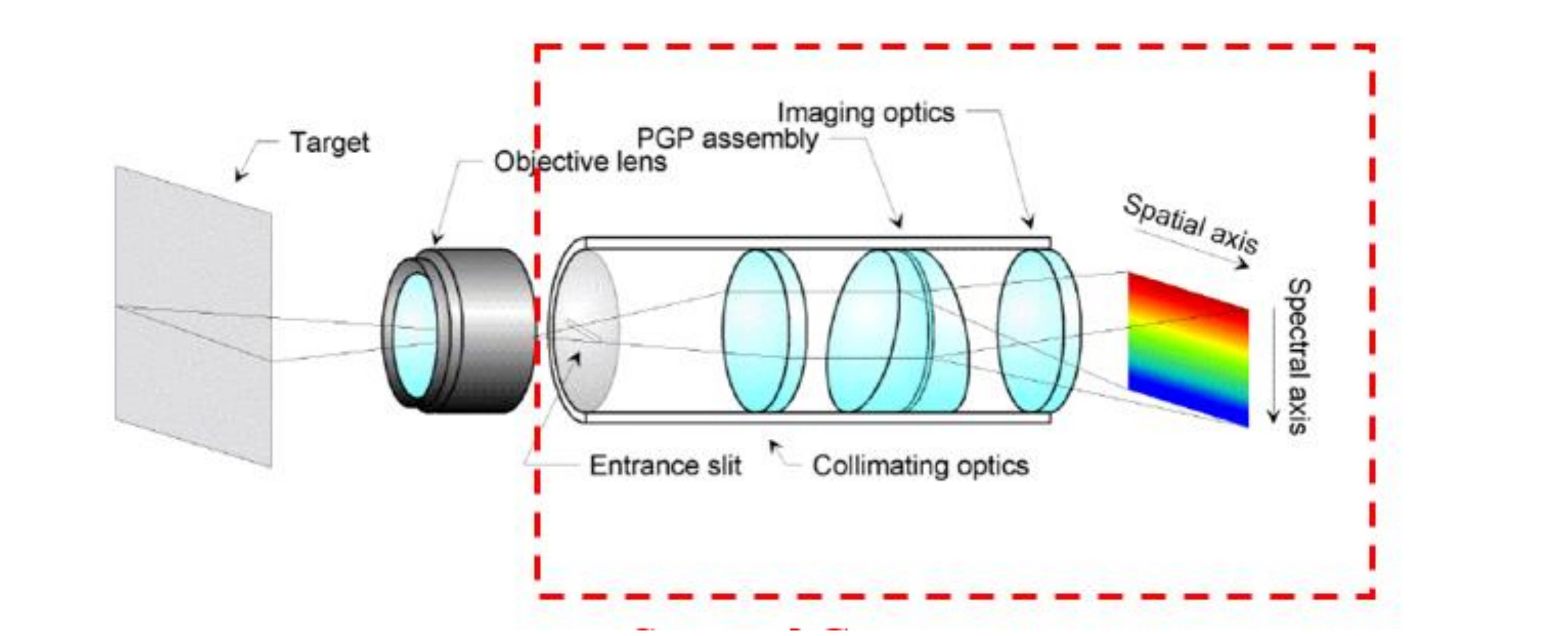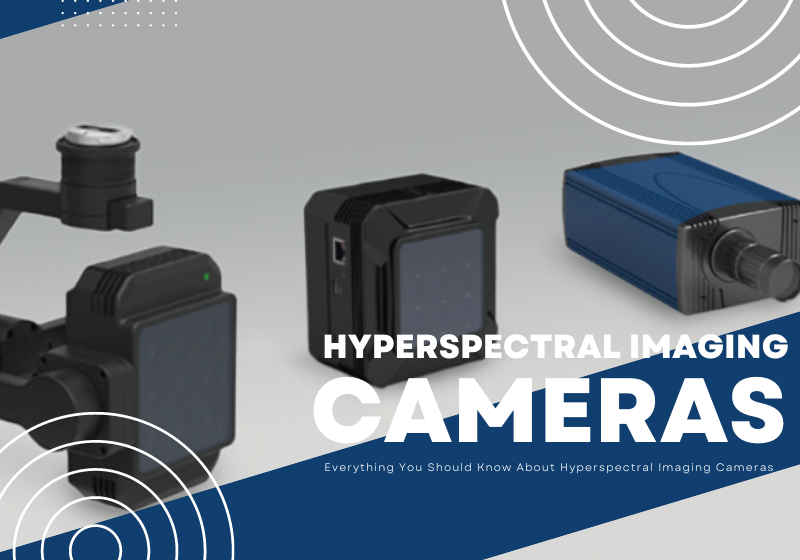

According to a report from ResearchAndMarkets, back in 2021, the global hyperspectral imaging system market was valued at $15.4 billion, estimated to hit a colossal spike of over $35.8 billion. All this development is expected to take place at a CAGR of 18.4% during the forecasted period of 2022-2026.
Looking at these figures, it is evident enough that hyperspectral imaging camera technology has taken over the market by storm. The lightning speed at which this spectral camera technology has been evolving and advancing entices the industry leaders to incorporate them into business and modify their industrial and clinical research with more detailed and precise results than ever.

What is a Hyperspectral Imaging Camera?
A Hyperspectral imaging camera is a device employed to execute the phenomenon of imaging spectroscopy. It is specially designed to capture the produced spectra whenever any matter comes in contact (either by light emission or absorption) with electromagnetic radiations. The spectral camera can also derive a radiant spectrum for every pixel present inside the targeted image.
Each pixel obtained through the hyperspectral imaging camera is translated by carefully collecting and filtering through the accumulated bands of light intensity data to recognize materials, discover objects, or sometimes even identify processes that are otherwise hard to interpret and distinguish.
Simply put, hyperspectral imaging cameras can catch rich details by getting the spectral information of a sample. For example, the human eye can only receive light signals of an object from three spectral bands: red, green, and blue. We can see the yellow color created from the combination of green and red, but we cannot distinguish it from the yellow light signal. However, a hyperspectral can catch the difference and show them on the spectrum.

How Does a Hyperspectral Imaging Camera Work?
The hyperspectral imaging camera functions by glancing at the targeted object with advanced sensors concentrating on a vast fragment of the electromagnetic spectrum. Everything that appears across the electromagnetic spectrum leaves traces of its presence in the shape of fingerprints. The sensors of this spectral camera pick up these trails, also known as spectral signatures, and mark their material identity as scanned object to interpret their pixels into different color bands.
In simple terms, you can regard the hyperspectral imaging camera as the integration of hundreds or thousands of single-dot spectrometers that line up to get the spectral information on each position of the sample.
Common Applications of the Hyperspectral Imaging Camera

Let’s look at some common applications of this spectral camera and how it’s helping them achieve their futuristic goals using its advanced operational techniques:
In agriculture, the instrument that can capture images at an extremely higher number of wavelengths is of great value. Mainly, it provides endless possibilities for closely observing and understanding different natural phenomena under a broad spectrum of colorful light bands.
Since the hyperspectral imaging camera has this ultimate quality of breaking down the image into radiant colors, it helps interpret the recorded light intensity data for deeper analysis, such as fertilizer content analysis. Moreover, the agricultural tests and monitoring activities that the hyperspectral imaging camera enhances with its groundbreaking features when attached to an active drone include the assessment of crop production, soil erosion troubles, plant diseases, weed growth, and others.
Similar to a traditional camera, a human eye can only detect the three primary colors, red, green, and blue (RGB), to assess the picture in front. However, this naked-eye detection is not enough to identify the nuance between a perfect fruit and a slightly damaged one.
So, food inspection requires technology that can expose the hidden information of the food for better quality evaluation protocols. And that’s where a hyperspectral imaging camera comes in.
The food inspection authorities utilize this modified combination of comprehensive spectral analysis to investigate food integrity in great depth and detail. The high-level insights drawn with the help of the hyperspectral imaging camera include quick assessment of fruit ripeness and other developmental stages and early identification of some food abnormalities like mold or fungus growth.
In the medical industry, medicinal inspection is counted among the most substantial areas of clinical research that needs a non-invasive and less interactive method to investigate medicinal properties. More precisely, it has to be done in such a way that it doesn’t involve any hazardous contamination in the chemical compounds of formulated medicines.
And to avoid altering the medicinal compositions with harmful radiations, bioengineers prefer an unparalleled piece of an image acquisition instrument that can help translate collected biochemical data by dividing it into specific and detailed spectral fragments.
The hyperspectral imaging camera utilizes its keen insight – which is supported by its spectral and graphic resolving ability – to distinguish pharmaceutical products appearing to be the same but containing different portions of active biochemical ingredients.
Hyperspectral imaging camera lends its extraordinary high-tech qualities to the industrial sector for performing several inspection protocols on different sophisticated projects. Among those many complex industrial inspections, the thin-film thickness inspection and the heat-sealed joint inspection are the two procedures known to make the most of spectral camera techniques.
Both inspections take advantage of the incredibly high spectral and spatial resolution designed to enhance the functionality of the hyperspectral imaging camera system with great distinction.
The ecological environment protection sector has also deployed hyperspectral imaging cameras for its high-resolution digital data storage facilities. These facilities can help them monitor unusual environmental changes, especially in places like forests. In such a natural environment, which is home to a limited number of species, the widespread of newly found pests and diseases provoke a high risk of affecting the entire ecosystem.
Thus, the authorities of ecological environment protection are closely monitoring northern forests and other areas facing similar situations with unbeatable hyperspectral imaging camera technology. They constantly monitor the slightest variations in the environment with great detail.
Advantages of SmartMoreInside’s Hyperspectral Imaging Camera
Among the endless benefits of tailoring to SmartMoreInside’s hyperspectral imaging camera technology to your detail-oriented technical projects, here are some of the prominent advantages:
Accurate spectrum data acquisition.
Email format error
Email cannot be empty
Email already exists
6-20 characters(letters plus numbers only)
The password is inconsistent
Email format error
Email cannot be empty
Email does not exist
6-20 characters(letters plus numbers only)
The password is inconsistent